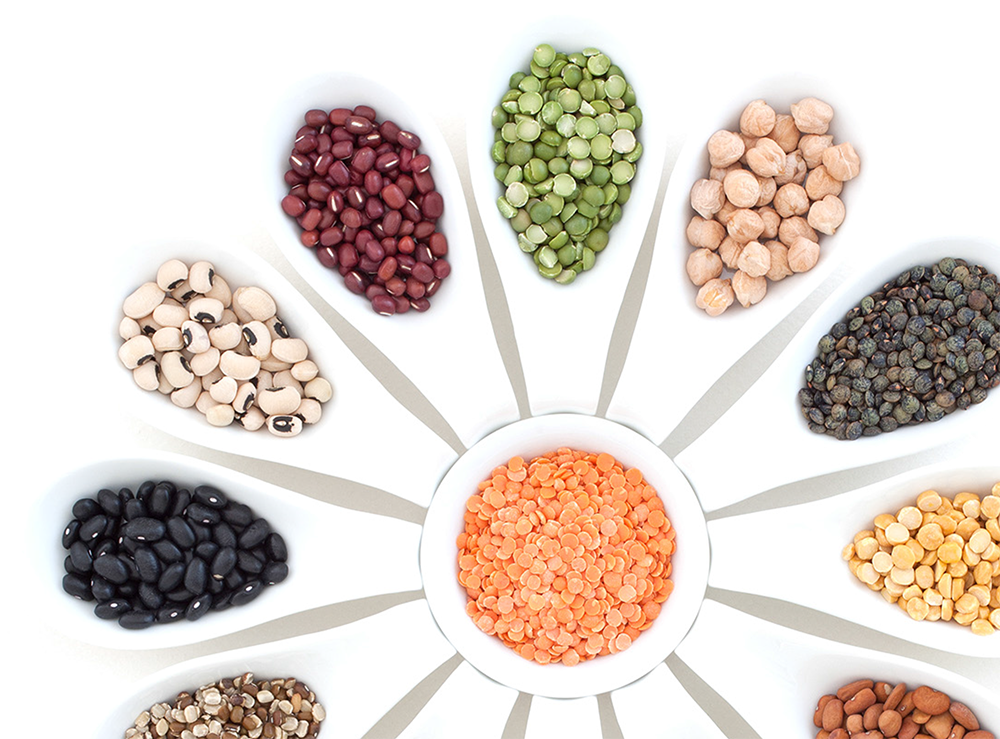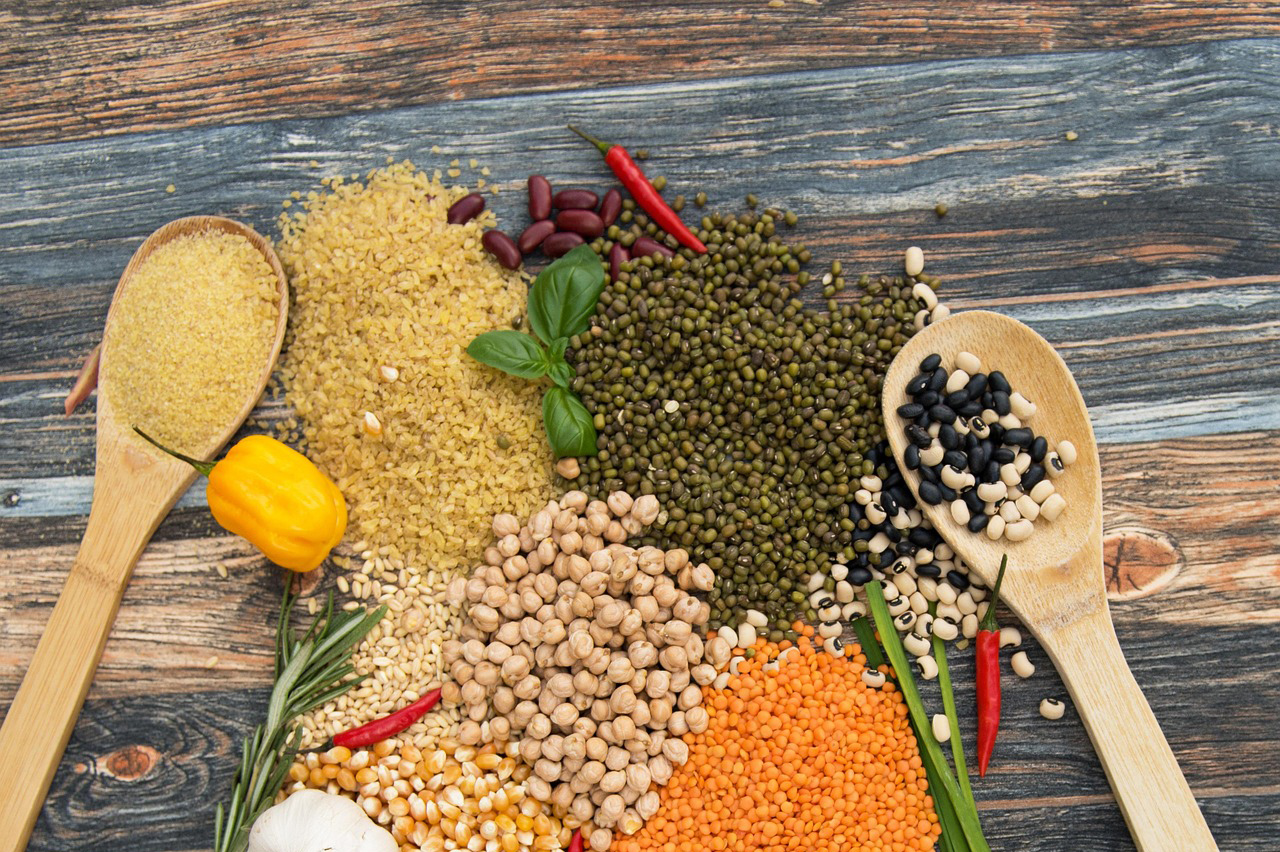Pulses are the edible, dry seeds of plants in the legume family. Examples of pulses include dry beans, dry peas, chickpeas, cow peas, pigeon peas, lentils, Bambara beans, vetches, and lupins. Pulses grow within a pod that can vary in shape, size, and color. Pulse pods can contain between one and 12 grains, or "seeds" depending on the plant variety.
Pulses provide crucial nutrients to our diet. Pulses are low in fat, high in fiber, and a good source of protein, vitamins, and minerals. In comparison to other plant-based foods, they have the richest supply of protein. They are a healthy part of any balanced diet, especially in developing countries with little access to meat or for people who choose a vegetarian or vegan diet. Pulses are very versatile and can be used in entrees, salads, breads, and desserts.
Most pulses are planted from seed in the early spring. They grow throughout the summer and are harvested in the late summer or fall. In addition to the health benefits of consuming pulses, growing pulses is also beneficial to the environment. As part of the legume family, the growth of pulses improves the quality of farm land by returning nitrogen to the soil through a process called nitrogen-fixing. Plants within the legume family contain symbiotic bacteria called rhizobia within the nodules of their root system. When the plant dies, the fixed nitrogen is released which fertilizes the soil and makes it available to other plants. As a result, pulses are a beneficial crop to include in a crop rotation to manage and balance soil nutrients. Watch the video, Science of Nitrogen Fixation to learn more about the discovery of nitrogen fixation by George Washington Carver and the benefits of crop rotation. Other cultivation practices that take advantage of the benefits of pulse/legume crops include:
- Inter-cropping: Growing two or more crops in the same field; often in the space between rows.
- Cover crops: Growing a crop for the protection and enrichment of the soil.
- Break crops: The practice of growing a secondary crop to interrupt the repeated sowing of cereals as part of a crop rotation.
 Farming, provides the food, fiber (fabric), and fuel that we use in our every-day lives. Farming requires the use of natural resources such as water and fertile soil. These natural resources are limited and must be managed properly to preserve them for future generations. This is generally referred to as sustainability, or the ability to farm using techniques that protect the environment, public health, and animal welfare. Growing and consuming pulses has a high level of sustainability.
Farming, provides the food, fiber (fabric), and fuel that we use in our every-day lives. Farming requires the use of natural resources such as water and fertile soil. These natural resources are limited and must be managed properly to preserve them for future generations. This is generally referred to as sustainability, or the ability to farm using techniques that protect the environment, public health, and animal welfare. Growing and consuming pulses has a high level of sustainability.
In this lesson, students will:
- understand how nutrients are passed from the soil to the plant through its root system;
- understand nitrogen-fixing as a concept; and
- learn about symbiosis through the role of rhizobia in growing pulses.

 Farming, provides the food, fiber (fabric), and fuel that we use in our every-day lives. Farming requires the use of natural resources such as water and fertile soil. These natural resources are limited and must be managed properly to preserve them for future generations. This is generally referred to as sustainability, or the ability to farm using techniques that protect the environment, public health, and animal welfare. Growing and consuming pulses has a high level of sustainability.
Farming, provides the food, fiber (fabric), and fuel that we use in our every-day lives. Farming requires the use of natural resources such as water and fertile soil. These natural resources are limited and must be managed properly to preserve them for future generations. This is generally referred to as sustainability, or the ability to farm using techniques that protect the environment, public health, and animal welfare. Growing and consuming pulses has a high level of sustainability.